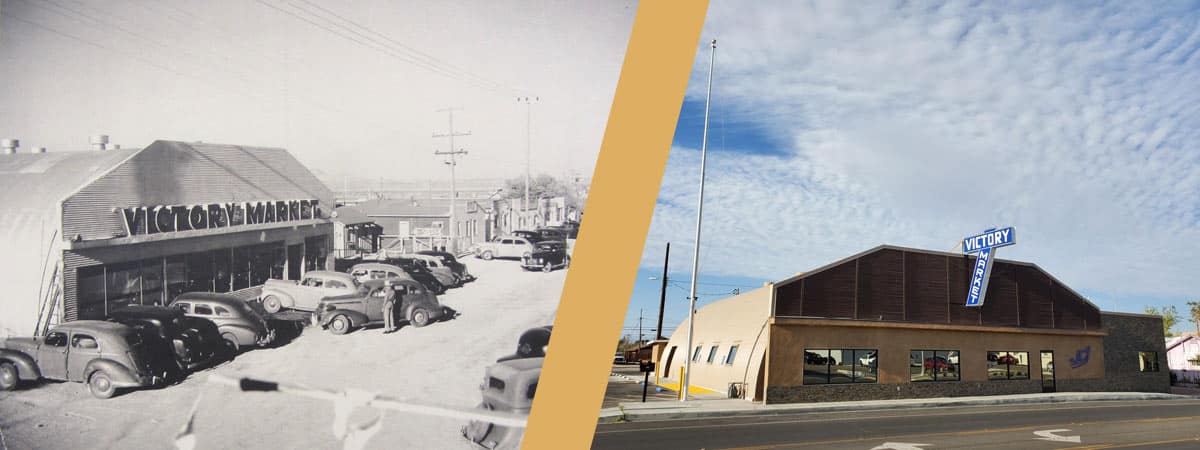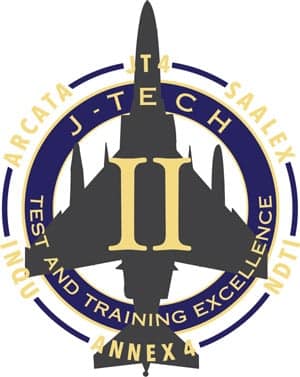The Naval Air Weapons Station (NAWS) China Lake is the high desert home of the Naval Air Warfare Center Weapons Division (NAWCWD), where the Navy and Marine Corps have developed or tested nearly every significant airborne weapon system in the past five decades. JT4 supports the U.S. Navy’s research, development, acquisition, testing and evaluation (RDAT&E) of cutting-edge weapons systems for the Warfighter on the China Lake Ranges (CLR). The ranges provide a large, secure, highly instrumented air- and ground-range complex for testing live and inert missiles, rockets, guns, lasers, unmanned aircraft systems (UAS), unmanned combat air vehicles (UCAV) and other weapons systems. The CLR, capable of day and night operations, provide an unprecedented venue for integrated testing and training of today’s Warfighter.
The pioneering spirit and can-do attitude that helped early residents through China Lake’s formative years have not disappeared. The direction and focus may have changed over time, but the China Lake community—military, civilian and contract personnel—remains an active and vital part of the continued success of the United States Navy.
Where we work
NAWS China Lake is part of the Navy Region Southwest, Commander, Navy Installations Command, and is located in the Western Mojave Desert region of California, approximately 150 miles north of Los Angeles. NAWS China Lake consists of a main site, the North Range and the South Range. The North Range supports ground operations (target development, live-fire bombing tests, unexploded ordnance [UXO], etc.) and is home of the Range Operations Center (ROC) where flight and ground tests are conducted. The South Range specializes in electronic warfare, including a full array of integrated threat capabilities. The North and South ranges, collectively referred to as the China Lake Ranges (CLR), are separated by 25 miles of public lands.


Platforms and exercises supported
The China Lake Ranges host platforms and ground forces for the Navy, Air Force, Army and even commercial enterprises like Google. These consist of aircraft (F-18 Hornet, F-35 Joint Strike Fighter [JSF], MQ-1 Predator), U.S. and foreign military (VX-9), missiles (AARGM, AIM-9X Sidewinder, HARM, RAM, Tomahawk, Spike, Trident), precision-guided munitions (JDAM, JSOW), and various service and joint Warfighter exercises.
JT4 supports all aspects of testing for these platforms. This includes the network and communications infrastructure, data transportation and production, traditional and cyber network security, operations and maintenance of various threat systems and support equipment, test management, meteorology, air traffic control, configuration and data management, surveying, drafting, signal and spectrum monitoring, range access control, range clean-up and recycling, target development and construction, vehicle maintenance and repair, generator and photovoltaic maintenance and repair, telemetry and other basic and specialized functions.

A message from the range manager
NAWS China Lake’s rich history dates back to World War II when facilities were needed for rocket testing. This legacy of excellence continues today as CLR supports advanced munitions testing, aircraft test and training events and electronic warfare testing. Our JT4 team provides the engineers, technicians and technical staff needed to ensure the United States maintains air dominance today and in the future.
– Darryl Johnson, Range Manager
What’s in a name?
According to local lore, China Lake received its name in the late 1800s due to the Chinese prospectors who worked hard to harvest borax, a powdery white mineral, from the dry lake bed located approximately 2.5 miles northeast of Ridgecrest, California.
Today, that dry lake bed serves as the perfect evaluation and testing ground for our NAWCWD customer, an organization belonging to Naval Air Systems Command (NAVAIR). Few areas in the world offer such wide variety of geographical features in close proximity—mountains, deserts, canyons, caves and forests. The air and land ranges at China Lake provide unmatched geographic conditions in which to develop and test weapon systems and explore tactics for desert and mountain environments.

What does it mean to work for JT4? For me, it’s my second family here in Ridgecrest, where I have lived for over 40 years. I started with predecessor company JT3 on the J-Tech I contract and continued working for JT4 on the J-Tech II contract. Honestly, I can see myself working here until I retire because I’m so happy in my position. Sure, there is the occasional long day and some stressful moments, but JT4 is a company that is willing to compensate for the extra hours, provides acknowledgment from mentors and peers for a job well done and offers guidance whenever necessary. I work with an awesome team where colleagues support one another across all of the ranges that JT4 supports. I’ve been blessed in my career with JT4 and look forward to paying it forward.
– Rashell F., Financial Analyst (CA)
Where we live
Directly adjacent to NAWS China Lake is the city of Ridgecrest, home of the majority of civilian naval installation personnel and our JT4 employees. Located in the Northern Mojave Desert, the city is surrounded by four mountain ranges: the Cosos on the north, the Argus Range to the east, the El Paso Mountains on the south and the Sierra Nevada to the west. Ridgecrest affords small town life without having to give up big city amenities, as numerous destination capitals of the world are within a few hours’ drive.
Historic roots
The JT4 Range Management Office is housed in one of the oldest buildings in Ridgecrest. Although JT4 is the sixth tenant of the newly renovated facility, the sign over the front entrance still reads “Victory Market” as a tribute to the first inhabitant. Built in the 1940s, the Victory Market, named in honor of the end of World War II, was one of the first large grocery stores in the area. Read more >


Contact Us
Location:
216 W. Ridgecrest Blvd.
Ridgecrest, CA. 93555
Mailing Address:
216 W. Ridgecrest Blvd.
Ridgecrest, CA. 93555
Phone: 760.677.2950
Fax: 760.677.2940
